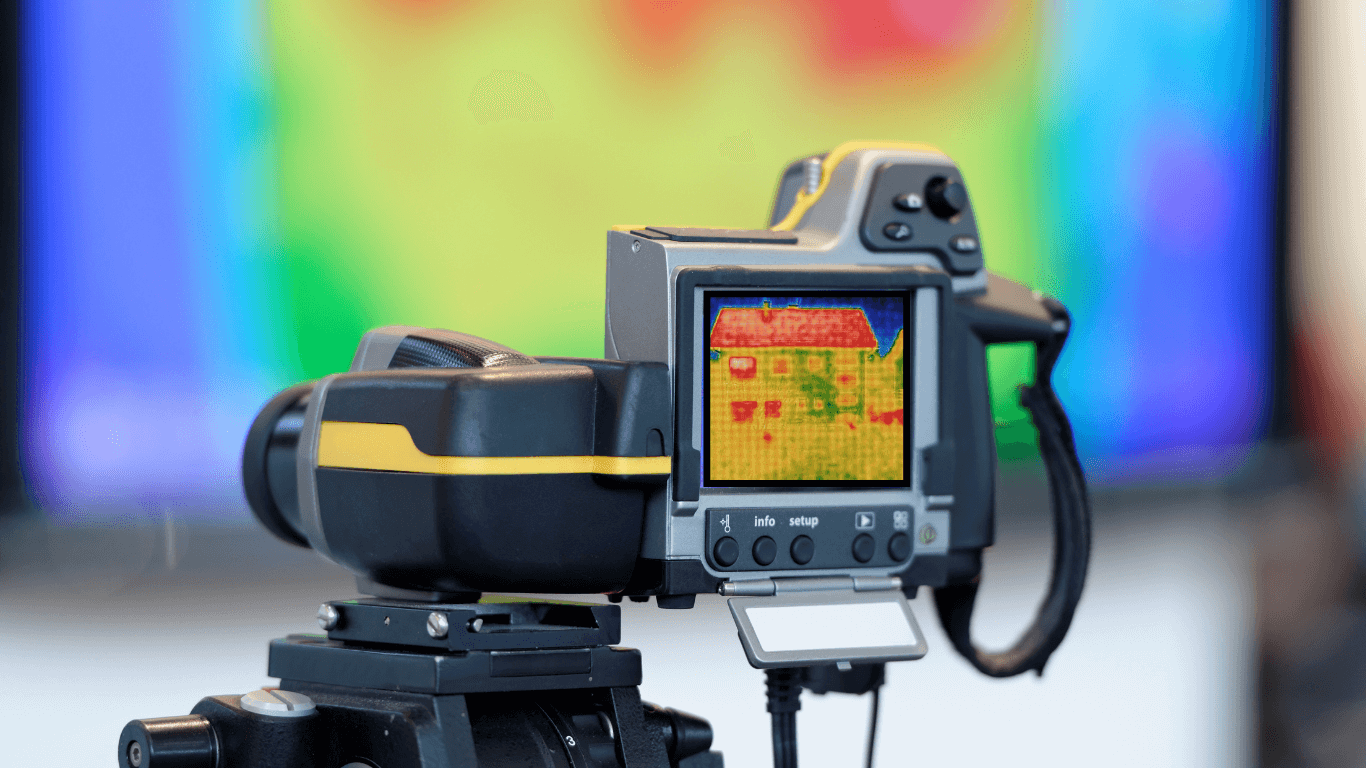
Borrow our thermal imaging cameras
See where your home is losing heat, start conversations in your community, and help people take practical steps to save energy.
If you’re part of a Low Carbon Hub community group, you’re welcome to borrow one of our thermal imaging cameras free of charge. It’s a simple way to show local residents where warmth is escaping and encourage action to make homes cosier and more energy efficient.
If you’d like to see how your own home performs, get in touch with your local group – they’ll let you know if thermal imaging surveys are happening nearby.
Why thermal imaging matters
Thermal imaging makes the invisible visible. By using an infrared camera, you can quickly see where heat is escaping from a building: through poorly insulated walls, gaps around windows, unsealed floorboards, or draughty loft hatches.
For homeowners, it’s often the first time they see clear, tangible evidence of where their home is losing heat. That simple image can be the spark that leads to action.
For community groups, thermal imaging is a powerful way to engage people locally. It creates conversations, builds awareness, and encourages households to make improvements that cut bills, reduce carbon, and keep homes warmer.
What groups get: free use of our thermal imaging cameras, training, support, and ready-to-use resources to run local projects.
What homeowners get: clear images of heat loss in their homes, plus guidance on simple next steps and where to find funding.
A thermal imaging project is a fantastic way of engaging householders in home energy efficiency, by showing them tangible evidence of the main areas where their home is losing heat.
Cathy Ryan, Community Engagement Manager, Low Carbon Hub
In action: thermal imaging around Oxfordshire
From learning to use the thermal imaging camera to community groups taking it out on the streets of Eynsham. When used after training, it can reveal everything from winter heat loss (bottom left) to summer heat build-up in roofs and rooms (bottom right).
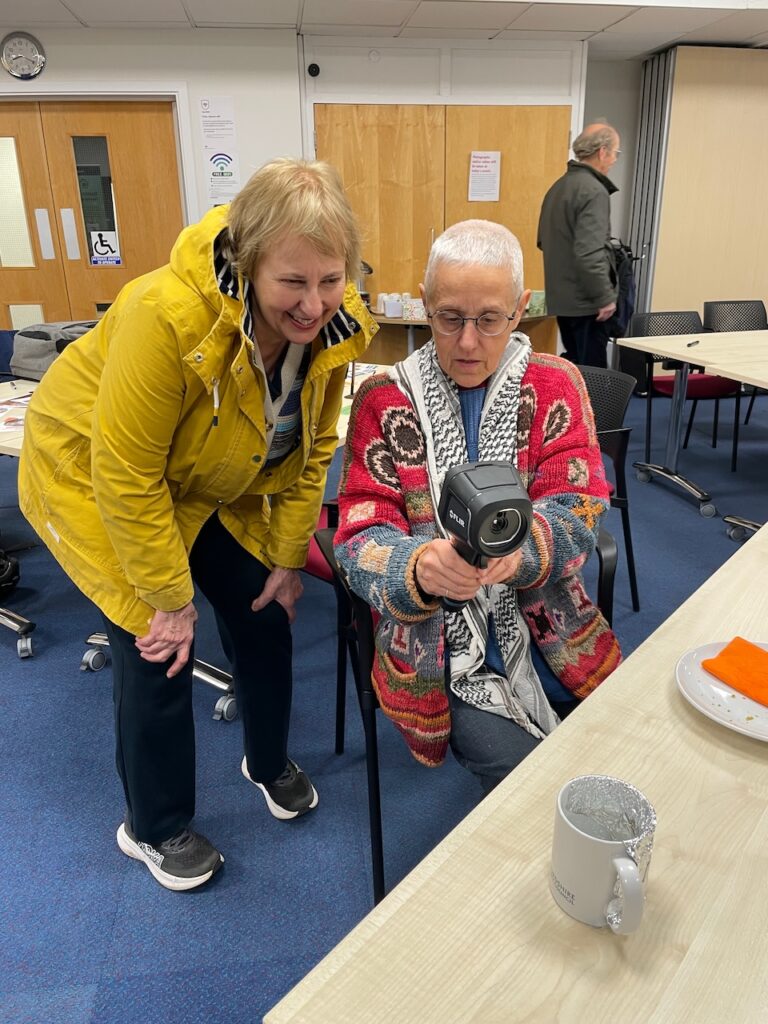
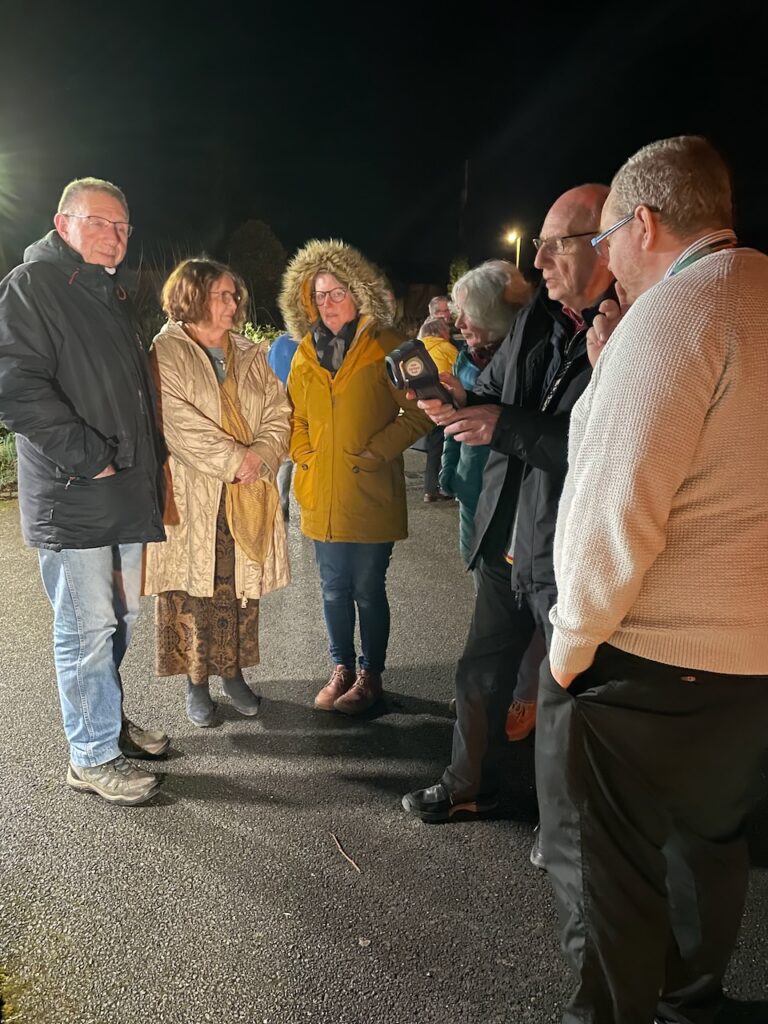
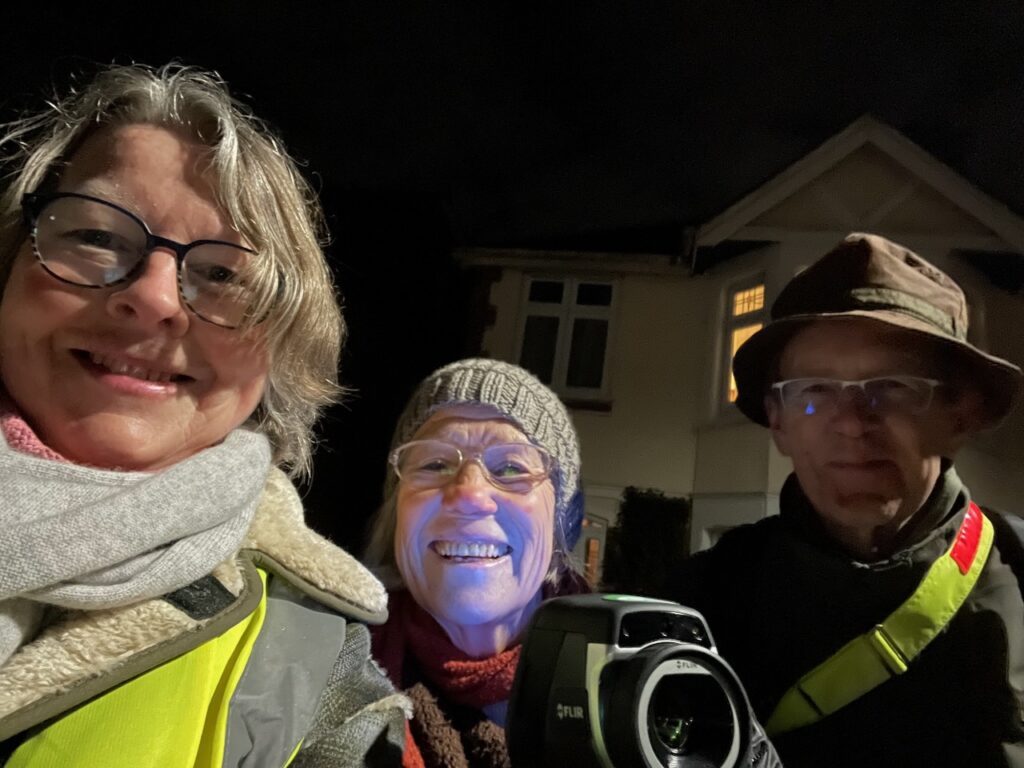
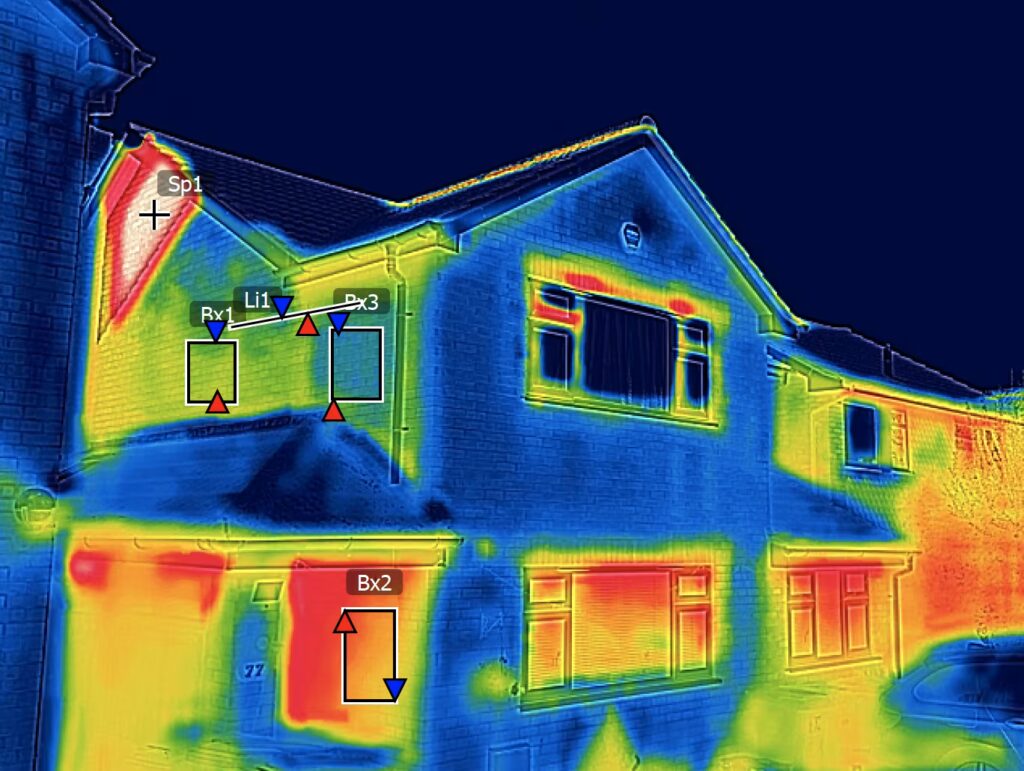
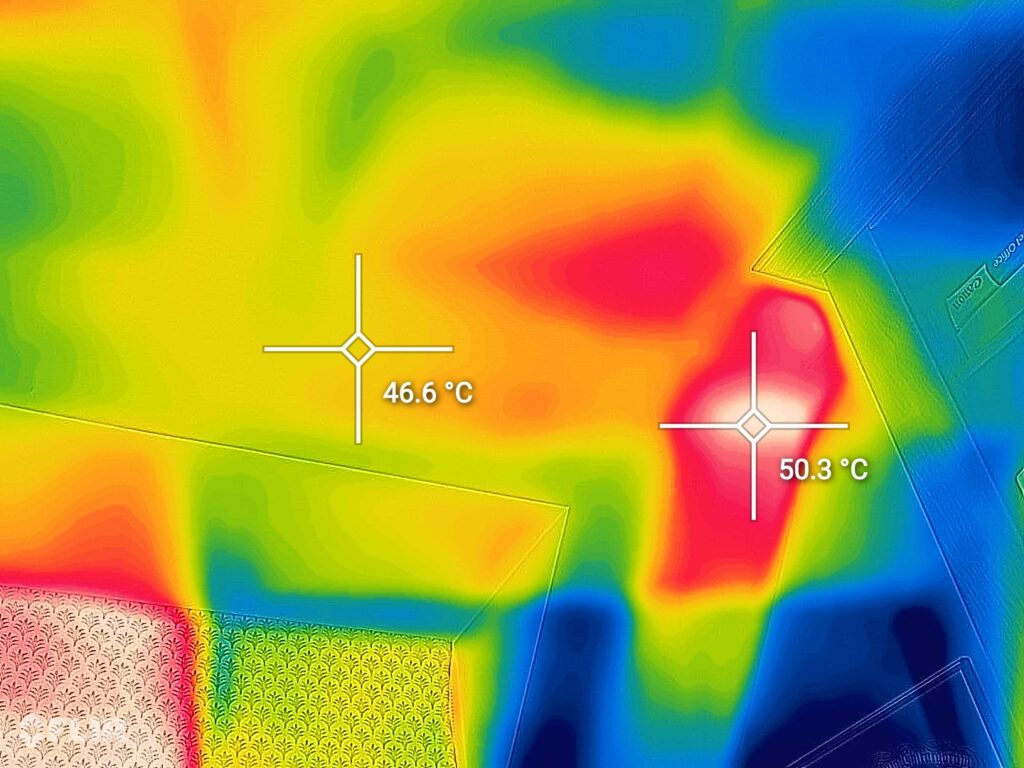
How to borrow a camera
Our cameras are free to borrow for Low Carbon Hub Community Groups. They can be used for household surveys or community building scans.
Community groups can book a camera using the online form below.
If you’d like to see how your home performs, get in touch with your local group – they’ll let you know if thermal imaging surveys are happening nearby.
For best results, carry out surveys on cold, dry winter evenings, ideally when there’s at least a 10–15°C difference between indoors and outdoors. Do plan ahead – camera availability is limited and they are in high demand over winter.
About the cameras
We have two thermal imaging cameras for local Low Carbon Hub Community Groups to borrow. These cameras help communities run projects that show homeowners exactly where their homes are losing heat – whether through walls, windows, roofs, or hidden draughts.
By using thermal imaging, you can see the problem areas for yourself and make informed decisions about insulation and other energy-saving improvements. Many local groups offer thermal imaging surveys as part of their community energy projects, helping homeowners take the first step towards a warmer, more efficient home.
Camera 1 (model: FLIR e30bx)
- Spare battery
- Case dimensions:
- Weight (including case):
- 4 hr operating time
- 160 x 120 pixels
- -20°C to 120 ºC temperature range
- Built-in WiFi
Camera 2 (model: FLIR E5xt)
- Case dimensions:
- Weight (including case):
- 4 hr operating time
- 160 × 120 pixels
- -20°C to 400°C temperature range
- Built-in WiFi
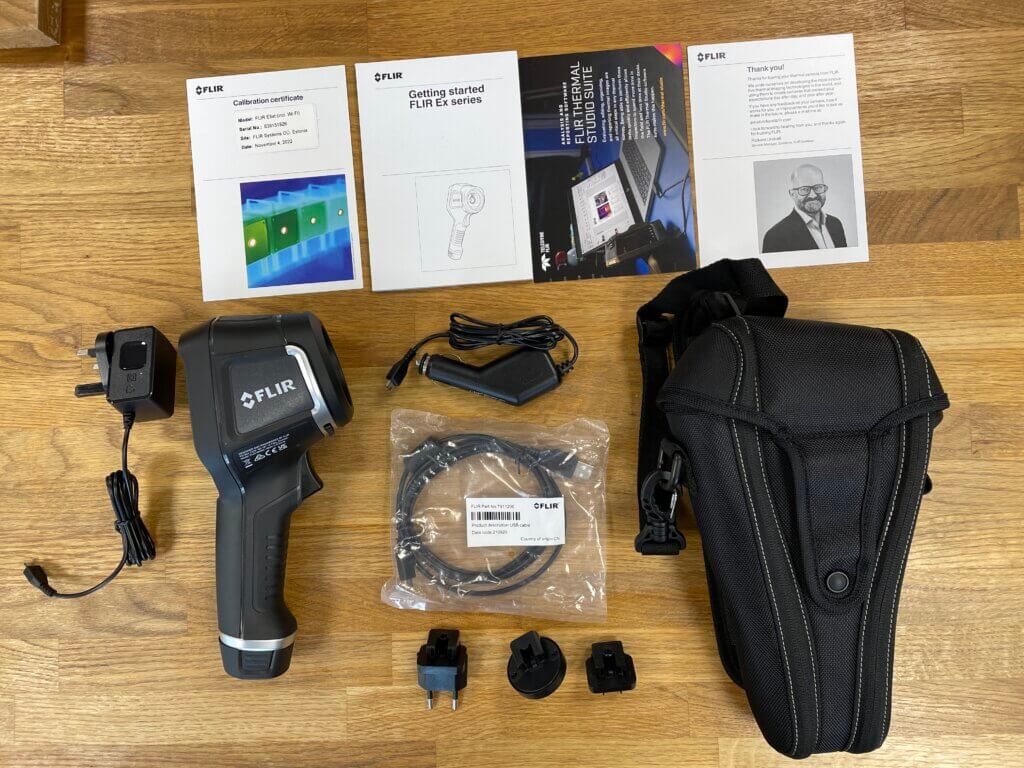
Thermal imaging training and support
We run workshops to give groups confidence in using the cameras. Training covers:
- How to use the camera effectively.
- Tips on interpreting images.
- How to organise a local project.
Resources from past sessions are also available, including Dale Hoyland’s Quick Guide to Interpreting Thermal Images, The CAG Network’s Guide to Thermal Imaging
Run a project in your community
This toolkit helps groups make the most of a camera loan, with step-by-step advice and downloadable resources.
- Recruit participants (template flyer).
- Capture data responsibly (A6 consent card with GDPR guidance).
- Run the scans (checklist + ideal conditions).
- Share results (template follow-up email).
- Encourage next steps (links to funding and Cosy Homes Oxfordshire).
Next steps for homeowners
Had your home scanned? Here’s what to do next.
- DIY fixes: get energy saving advice for draughtproofing, sealing loft hatches, adding insulation.
- Funding available: check your eligibility for the Home Upgrade Grant Welcome the Warmth or Better Housing Better Health support.
- Thinking bigger: for whole-home upgrades, get free independent advice through Cosy Homes Oxfordshire.
